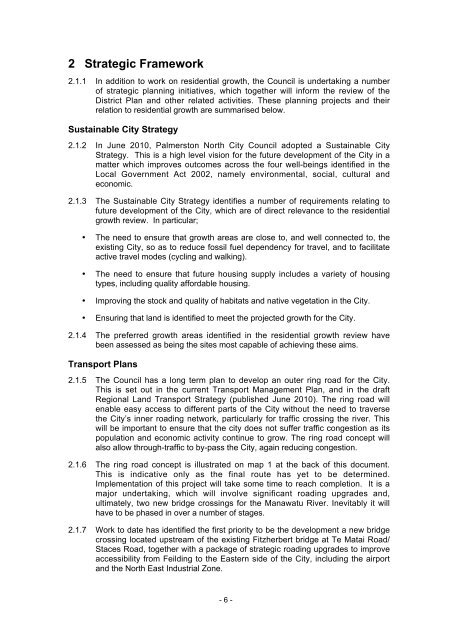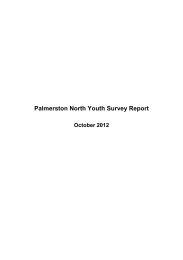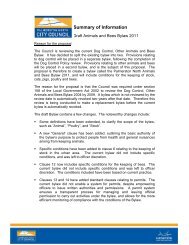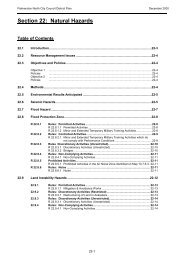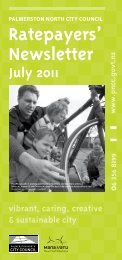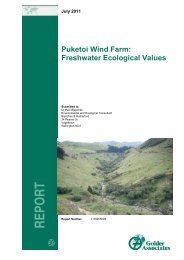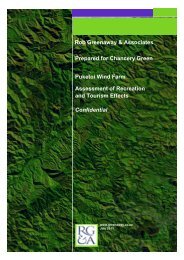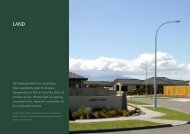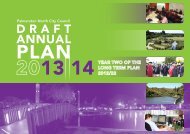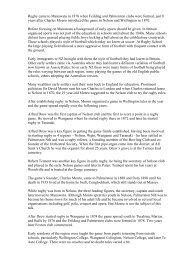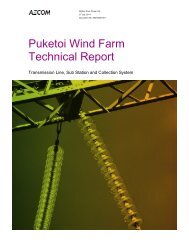RESIDENTIAL GROWTH STRATEGY - Palmerston North City Council
RESIDENTIAL GROWTH STRATEGY - Palmerston North City Council
RESIDENTIAL GROWTH STRATEGY - Palmerston North City Council
Create successful ePaper yourself
Turn your PDF publications into a flip-book with our unique Google optimized e-Paper software.
2 Strategic Framework<br />
2.1.1 In addition to work on residential growth, the <strong>Council</strong> is undertaking a number<br />
of strategic planning initiatives, which together will inform the review of the<br />
District Plan and other related activities. These planning projects and their<br />
relation to residential growth are summarised below.<br />
Sustainable <strong>City</strong> Strategy<br />
2.1.2 In June 2010, <strong>Palmerston</strong> <strong>North</strong> <strong>City</strong> <strong>Council</strong> adopted a Sustainable <strong>City</strong><br />
Strategy. This is a high level vision for the future development of the <strong>City</strong> in a<br />
matter which improves outcomes across the four well-beings identified in the<br />
Local Government Act 2002, namely environmental, social, cultural and<br />
economic.<br />
2.1.3 The Sustainable <strong>City</strong> Strategy identifies a number of requirements relating to<br />
future development of the <strong>City</strong>, which are of direct relevance to the residential<br />
growth review. In particular;<br />
• The need to ensure that growth areas are close to, and well connected to, the<br />
existing <strong>City</strong>, so as to reduce fossil fuel dependency for travel, and to facilitate<br />
active travel modes (cycling and walking).<br />
• The need to ensure that future housing supply includes a variety of housing<br />
types, including quality affordable housing.<br />
• Improving the stock and quality of habitats and native vegetation in the <strong>City</strong>.<br />
• Ensuring that land is identified to meet the projected growth for the <strong>City</strong>.<br />
2.1.4 The preferred growth areas identified in the residential growth review have<br />
been assessed as being the sites most capable of achieving these aims.<br />
Transport Plans<br />
2.1.5 The <strong>Council</strong> has a long term plan to develop an outer ring road for the <strong>City</strong>.<br />
This is set out in the current Transport Management Plan, and in the draft<br />
Regional Land Transport Strategy (published June 2010). The ring road will<br />
enable easy access to different parts of the <strong>City</strong> without the need to traverse<br />
the <strong>City</strong>’s inner roading network, particularly for traffic crossing the river. This<br />
will be important to ensure that the city does not suffer traffic congestion as its<br />
population and economic activity continue to grow. The ring road concept will<br />
also allow through-traffic to by-pass the <strong>City</strong>, again reducing congestion.<br />
2.1.6 The ring road concept is illustrated on map 1 at the back of this document.<br />
This is indicative only as the final route has yet to be determined.<br />
Implementation of this project will take some time to reach completion. It is a<br />
major undertaking, which will involve significant roading upgrades and,<br />
ultimately, two new bridge crossings for the Manawatu River. Inevitably it will<br />
have to be phased in over a number of stages.<br />
2.1.7 Work to date has identified the first priority to be the development a new bridge<br />
crossing located upstream of the existing Fitzherbert bridge at Te Matai Road/<br />
Staces Road, together with a package of strategic roading upgrades to improve<br />
accessibility from Feilding to the Eastern side of the <strong>City</strong>, including the airport<br />
and the <strong>North</strong> East Industrial Zone.<br />
- 6 -


